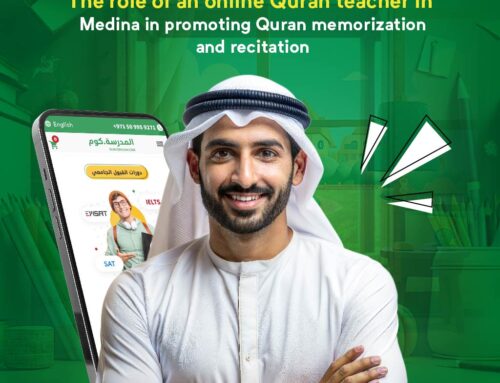
The rise of globalization has prompted a greater need for non-native speakers to learn Arabic, especially in regions like Qassim. Teaching Arabic in Qassim requires not only an understanding of the language but also effective strategies tailored to non-native speakers. These strategies ensure that learners can grasp the nuances of the Arabic language for foreign beginners, taking into account the unique linguistic challenges they face.
Teaching Arabic in Qassim
When it comes to teaching Arabic in Qassim, instructors must first understand the specific needs of non-native learners. Qassim’s demographic includes expatriates from diverse cultural backgrounds, each bringing a different approach to language learning. One of the key challenges non-native speakers face is the intricate grammar system and unique phonetic sounds in Arabic, which are often vastly different from those in their native languages.
To make teaching Arabic in Qassim more effective, instructors should adopt a learner-centered approach. This begins with assessing the learners’ levels of proficiency in Arabic, understanding their language goals, and identifying any particular struggles they have with the language. For example, some learners may find pronunciation difficult due to the throat-based sounds unique to Arabic, while others might struggle with grammar rules or script recognition.
The Role of Language Immersion
One of the most successful strategies for teaching Arabic in Qassim is language immersion. Non-native speakers are more likely to pick up on subtle language nuances when they are fully immersed in an environment where Arabic is the primary medium of communication. Language immersion allows learners to practice speaking, listening, reading, and writing in authentic, real-world situations, making it easier to internalize vocabulary and grammatical structures.
In Qassim, where Arabic is the dominant language in daily life, learners can benefit greatly from immersion techniques. This can be done through classroom activities such as role-playing and simulations, where students practice conversations and interactions they are likely to encounter in the community. Additionally, instructors can encourage students to engage with locals and use Arabic in various social contexts, such as at markets, cafes, or while navigating public services. By doing so, teaching Arabic in Qassim becomes more practical and aligned with the learners’ real-life needs.
Culturally Relevant Teaching Materials
Another crucial aspect of teaching Arabic in Qassim is the use of culturally relevant teaching materials. Non-native speakers often feel more connected to the language when the content they are learning reflects the culture in which they are living. Instructors can incorporate cultural aspects of Qassim into the curriculum, such as using examples from local customs, traditions, and regional history. This not only helps learners feel more engaged but also provides context for the language, making it easier to remember and use in daily conversations.
For beginners, culturally relevant materials may include simple stories, local expressions, and proverbs that are commonly used in Qassim. These materials should be selected carefully to match the learners’ proficiency levels while also giving them insights into the cultural and social dynamics of the region.
Practical Communication over Formality
When teaching Arabic in Qassim to non-native speakers, it is important to strike a balance between teaching formal Modern Standard Arabic (MSA) and practical communication skills. While MSA is essential for understanding written Arabic, many learners need to focus on conversational Arabic, particularly the dialect spoken in Qassim. The local dialect is widely used in everyday interactions, making it necessary for non-native speakers to familiarize themselves with it to communicate effectively.
Instructors should consider integrating both MSA and the local dialect into their teaching strategies. Beginners can start with MSA to build a strong grammatical foundation, while also learning common phrases and expressions in the local dialect. As learners progress, they can gradually incorporate more dialectal elements into their speaking and listening activities.
Elmadrasah.com’s Role in Supporting Arabic Learners in Qassim
For non-native speakers seeking structured language education, Elmadrasah.com has become a valuable resource in teaching Arabic in Qassim. This platform offers personalized lessons that cater specifically to the needs of Arabic learners, ranging from beginners to advanced levels. What sets Elmadrasah.com apart is its focus on real-life communication skills, cultural immersion, and tailored teaching methods, making it a perfect complement to in-person learning in Qassim.
Elmadrasah.com emphasizes flexibility and learner-centered approaches, which are crucial when working with diverse language learners. In the context of teaching Arabic in Qassim, the courses offered through the platform can help non-native speakers access structured lessons that align with their language goals and needs. Moreover, learners can benefit from experienced teachers who understand the linguistic and cultural challenges faced by foreign beginners, ensuring a smoother and more efficient learning journey.
Interactive Teaching Methods for Engagement
Interactive teaching methods are essential for maintaining engagement and motivation when teaching Arabic in Qassim. Traditional lecture-based approaches may not be as effective for non-native learners, particularly those with limited exposure to the Arabic language. In contrast, interactive methods such as group discussions, language games, and peer-to-peer learning can enhance the learning experience by making it more dynamic and participatory.
One example of an interactive method is incorporating technology into the classroom. This could include the use of multimedia resources like videos, audio clips, and interactive language apps that complement the lessons. These tools allow learners to practice their listening and speaking skills outside of the classroom, helping them to reinforce what they have learned. Additionally, technology can support virtual language exchange programs, where learners in Qassim can communicate with Arabic speakers from other regions, broadening their exposure to different dialects and cultural contexts.
Another interactive approach involves project-based learning, where learners are assigned tasks that require them to use Arabic in practical, real-world situations. For instance, students can work on projects that involve interviewing local residents, conducting research on cultural traditions in Qassim, or writing short essays about their experiences in the region. Such projects allow learners to apply their language skills in meaningful ways, fostering both language proficiency and cultural understanding.
Addressing Common Challenges in Teaching Arabic
Teaching Arabic in Qassim to non-native speakers can come with its own set of challenges. One of the most common obstacles is the complexity of the Arabic script, which can be intimidating for beginners. Unlike languages that use the Latin alphabet, Arabic is written from right to left and features a unique set of characters. To help foreign beginners overcome this challenge, instructors can break down the learning process into manageable steps. For example, learners can start by mastering individual letters before moving on to words and sentences.
Another challenge non-native learners face is the difference between spoken and written Arabic. Modern Standard Arabic is used in formal writing and media, while various dialects are spoken in different regions, including Qassim. This dichotomy can confuse learners, especially when they are unsure of which form of Arabic to use in different situations. Instructors can address this issue by clarifying when it is appropriate to use MSA and when to switch to the local dialect. By gradually introducing both forms of Arabic, learners can develop a more comprehensive understanding of the language and its practical applications.
Creating a Supportive Learning Environment
Building a supportive and inclusive learning environment is critical when teaching Arabic in Qassim. Non-native learners often experience feelings of frustration or self-doubt, especially when they encounter difficulties with the language. Instructors can help alleviate these feelings by creating a positive and encouraging atmosphere where mistakes are viewed as learning opportunities.
Group activities that promote collaboration and peer support can be particularly effective. When learners work together to solve language problems or practice conversation, they build confidence and motivation. Additionally, instructors should provide regular feedback to learners, highlighting their progress and areas for improvement. Constructive feedback helps learners stay on track and remain motivated throughout their language learning journey.
Utilizing Visual Aids and Mnemonics
Visual aids and mnemonics can be powerful tools in teaching Arabic in Qassim, especially for visual learners. The use of flashcards, charts, and diagrams can help non-native speakers memorize vocabulary and grammar rules more easily. Mnemonics, or memory aids, can also be employed to help learners remember challenging concepts. For example, instructors can use mnemonic devices to teach learners the order of the Arabic alphabet or common verb conjugations.
In addition to traditional visual aids, digital tools such as interactive whiteboards or language learning apps can further enhance the learning experience. These tools allow instructors to create engaging lessons that appeal to different learning styles, making the content more accessible and enjoyable for learners.
The Importance of Consistent Practice
Consistent practice is one of the most important factors for success when teaching Arabic in Qassim. Language learning is a skill that requires regular reinforcement, and non-native speakers must practice speaking, listening, reading, and writing Arabic on a daily basis to see progress. Instructors should emphasize the importance of practice both inside and outside the classroom, encouraging learners to immerse themselves in the language as much as possible.
One way to promote consistent practice is by assigning homework that requires learners to use Arabic in real-life situations. This could include tasks such as writing a diary entry in Arabic, having a conversation with a local resident, or reading a short story in Arabic. By integrating the language into their daily routines, learners can accelerate their progress and build confidence in their abilities.
Tailoring Lessons to Individual Learning Styles
Every learner is unique, and teaching Arabic in Qassim should take into account the different learning styles and preferences of non-native speakers. Some learners may prefer a more structured approach with clear grammar rules and exercises, while others may thrive in a more conversational, interactive setting. Instructors should be flexible in their teaching methods, adapting lessons to meet the needs of each student.
For example, auditory learners may benefit from listening to Arabic music, podcasts, or radio shows, while kinesthetic learners might prefer hands-on activities such as writing practice or language games. By catering to individual learning styles, instructors can create a more personalized and effective learning experience for each student.
Expanding Learning Opportunities through Blended Learning
In recent years, blended learning has emerged as a highly effective approach for teaching Arabic in Qassim. This method combines the strengths of both face-to-face instruction and online learning tools, offering non-native speakers the flexibility they need while maintaining a structured learning path. For learners who may have other professional or personal commitments, blended learning offers the perfect balance, allowing them to engage in both in-class instruction and self-paced online modules.
Teaching Arabic in Qassim with a blended learning approach enables instructors to utilize the best of both worlds. Classroom-based learning offers the opportunity for real-time interaction, where learners can ask questions and receive immediate feedback, while online lessons through platforms like Elmadrasah.com give students the flexibility to practice their skills at their own convenience. The combination of live, immersive lessons and independent study ensures that students can not only learn at their own pace but also benefit from interactive learning in real-world contexts.
Blended learning also facilitates the use of supplementary resources that enhance the learners’ understanding of the Arabic language for foreign beginners. For instance, instructors can assign online exercises or language-learning activities that learners can complete outside of class. These could include reading comprehension exercises, listening activities, and quizzes designed to reinforce key vocabulary and grammatical concepts. With access to such resources, learners have the ability to continually practice, even when they’re not in the classroom, leading to faster mastery of the Arabic language.
Fostering Critical Thinking through Language
An important strategy for teaching Arabic in Qassim involves fostering critical thinking alongside language acquisition. Teaching a language isn’t just about memorizing vocabulary and grammar rules—it also requires helping learners develop the ability to think in that language. By encouraging students to critically engage with the content they’re learning, instructors can facilitate a deeper understanding of both the Arabic language and its cultural context.
One effective way to achieve this is by integrating analytical discussions into the language curriculum. For instance, instructors could ask learners to analyze Arabic texts, such as short stories or newspaper articles, encouraging them to think critically about the message conveyed and the linguistic devices used. This not only helps students to better understand sentence structure, word usage, and idiomatic expressions but also allows them to build critical thinking skills that will benefit them beyond the classroom.
Additionally, by providing non-native speakers with opportunities to express their thoughts and opinions in Arabic, instructors can nurture learners’ confidence in using the language for intellectual and creative purposes. Whether it’s through structured debates, writing assignments, or group discussions, these activities enable learners to practice the language in meaningful ways while simultaneously fostering critical thinking skills.
Conclusion
Teaching Arabic in Qassim to non-native speakers requires a multifaceted approach that addresses the linguistic and cultural challenges faced by learners. By incorporating strategies such as language immersion, culturally relevant materials, and interactive teaching methods, instructors can create an engaging and supportive learning environment. Platforms like Elmadrasah.com provide valuable resources for learners, offering personalized lessons that complement in-person language instruction. With consistent practice and tailored lessons, non-native speakers in Qassim can achieve fluency in Arabic, unlocking new opportunities for cultural exchange and professional growth.















